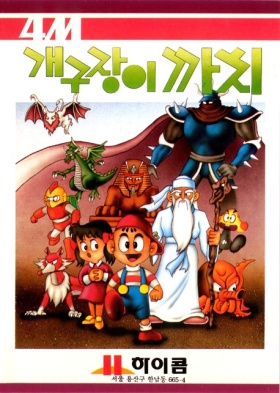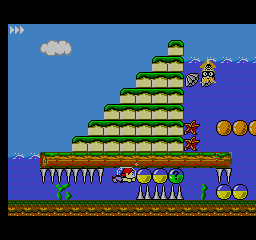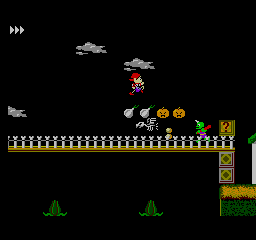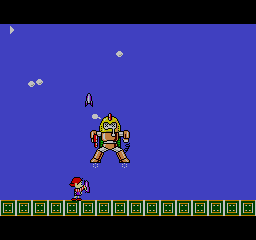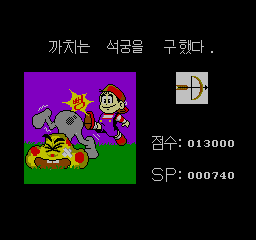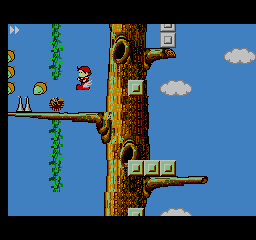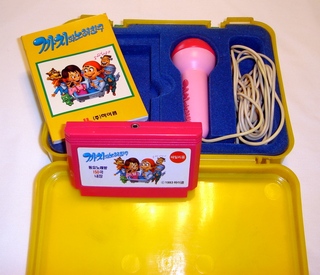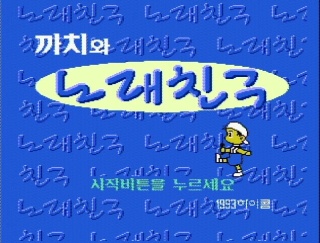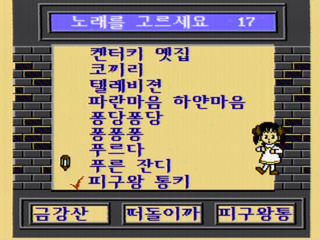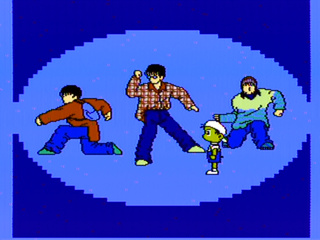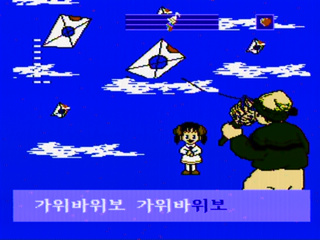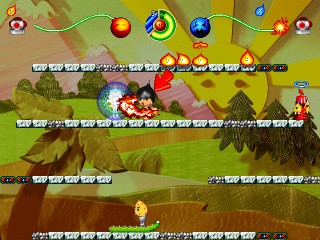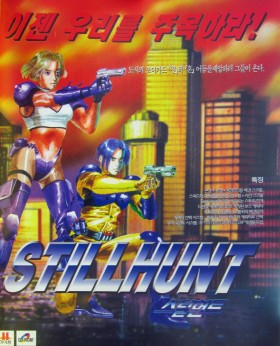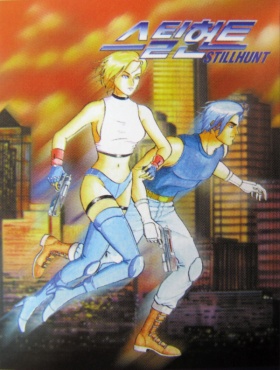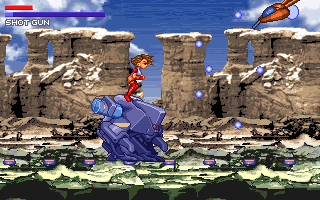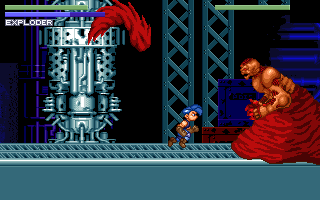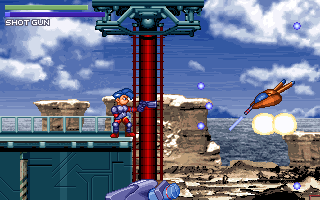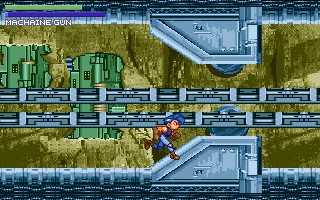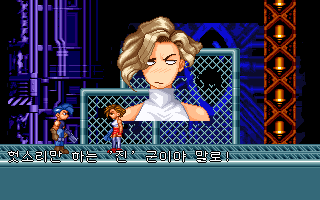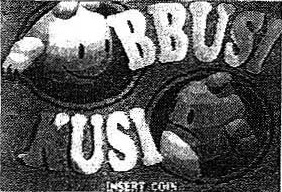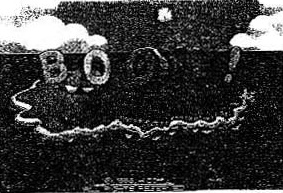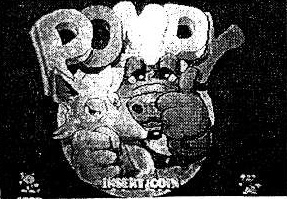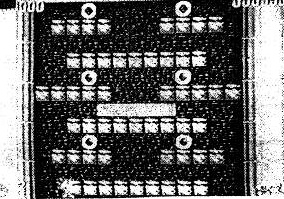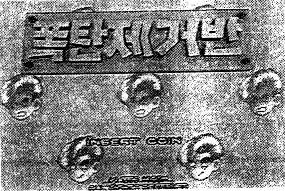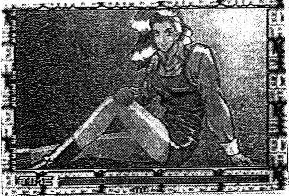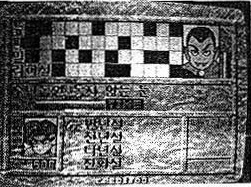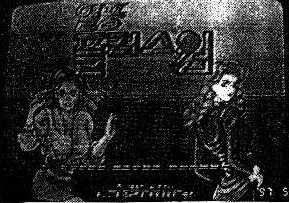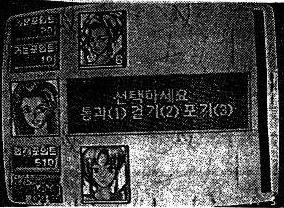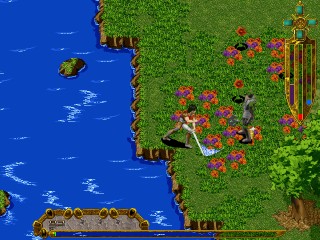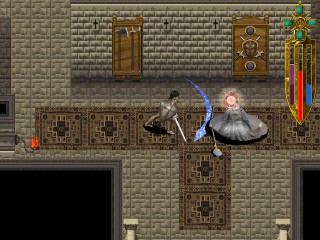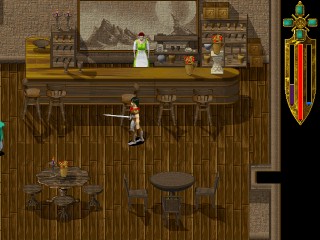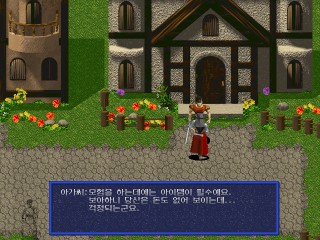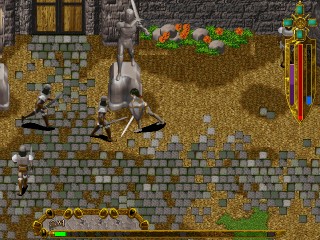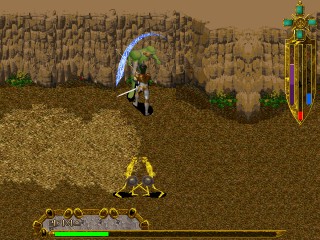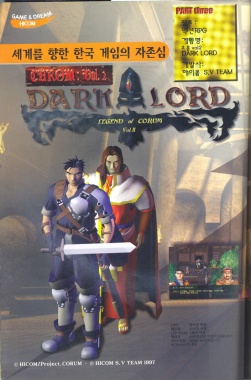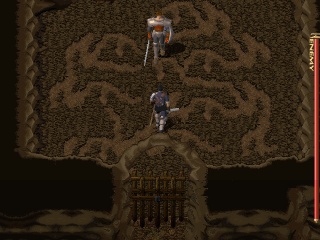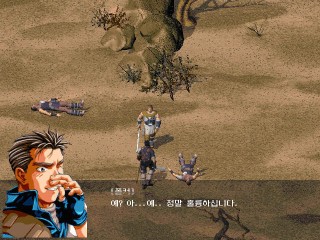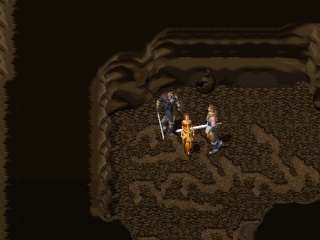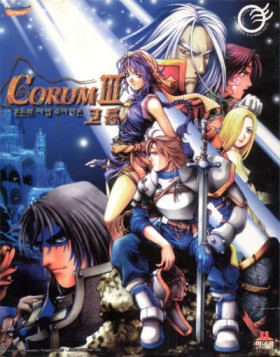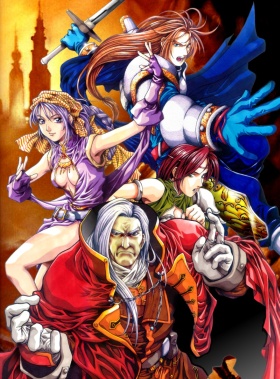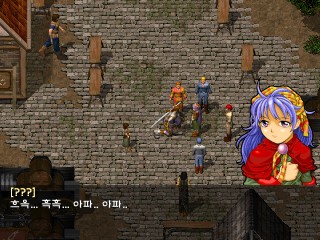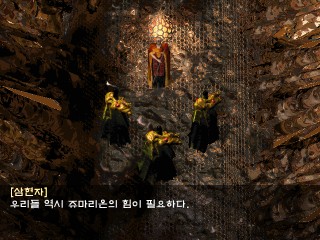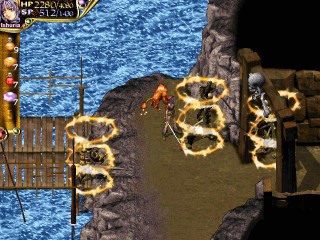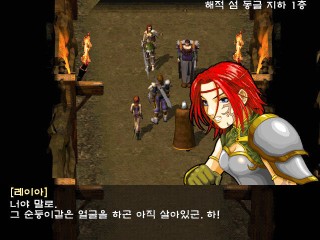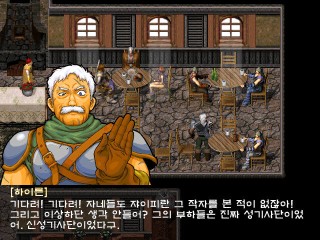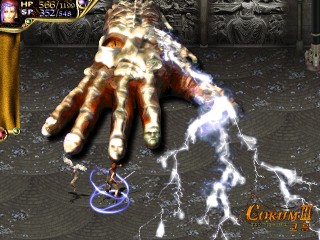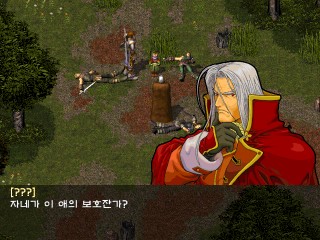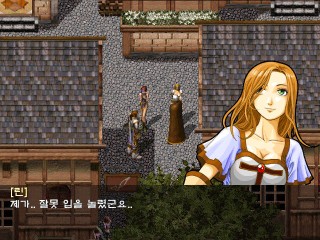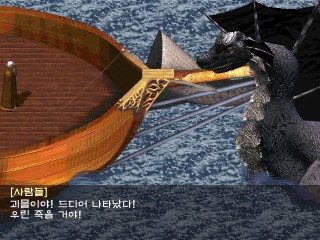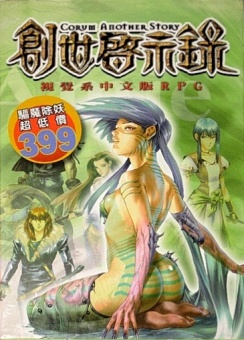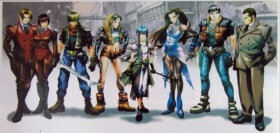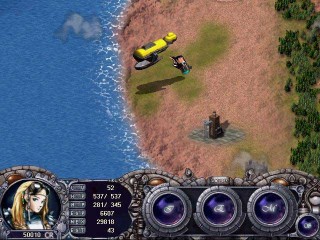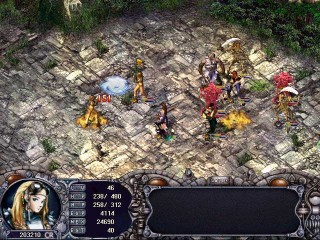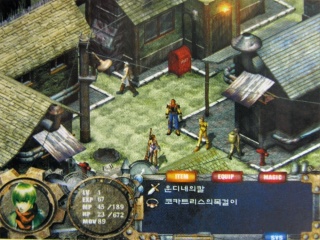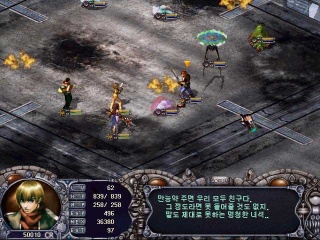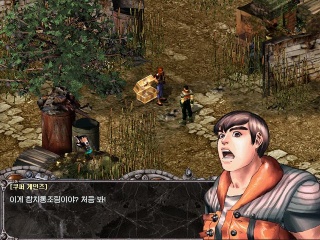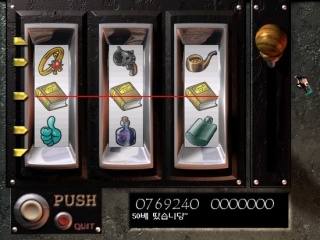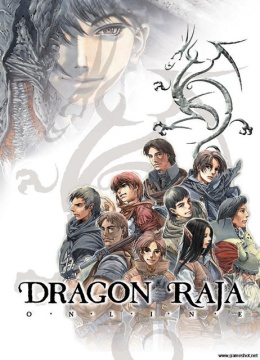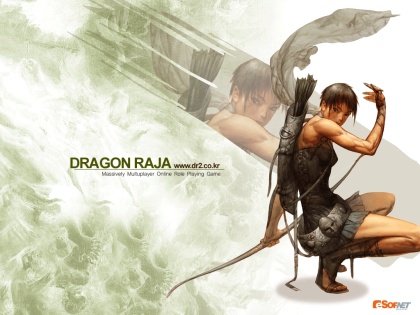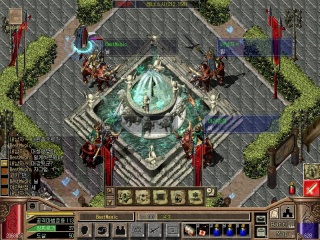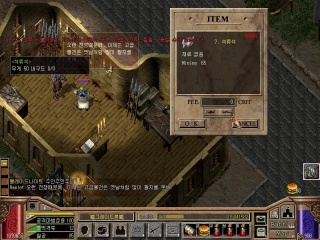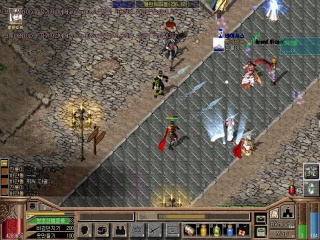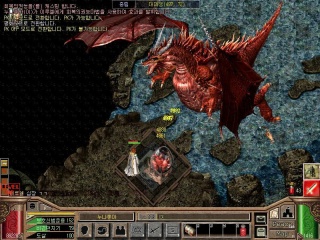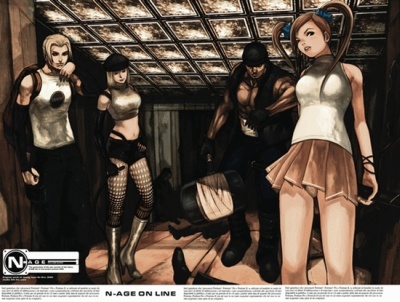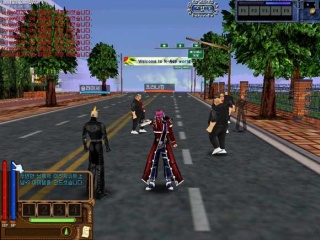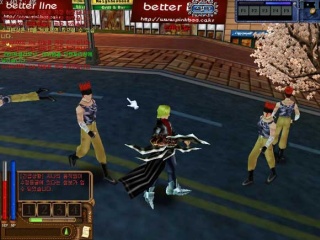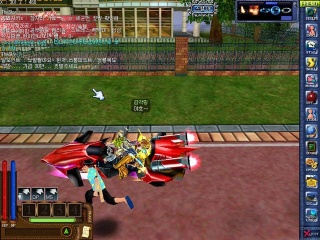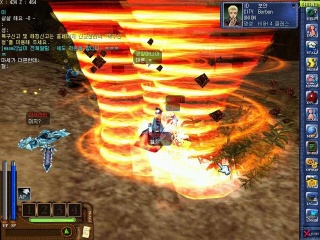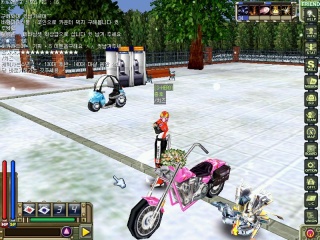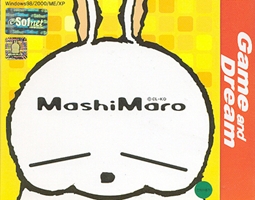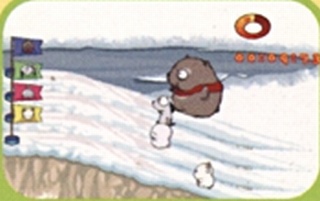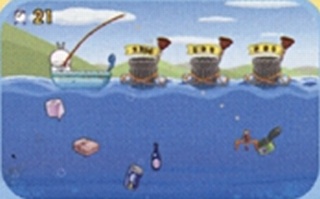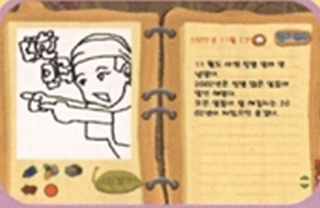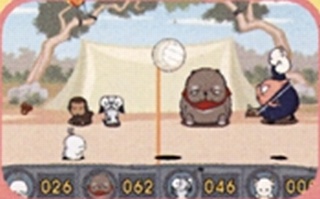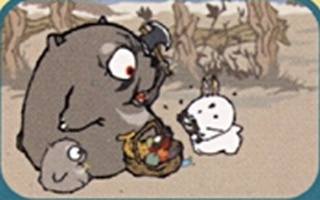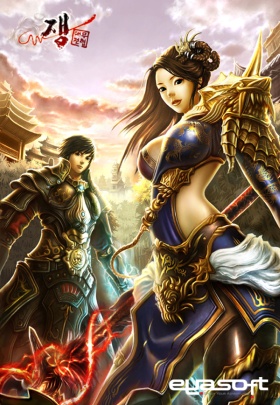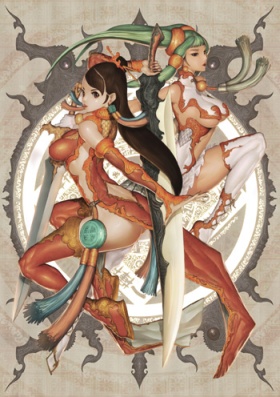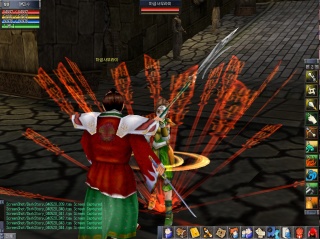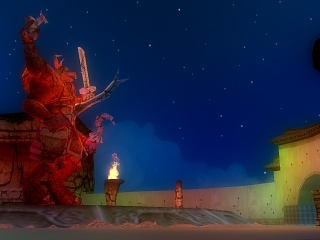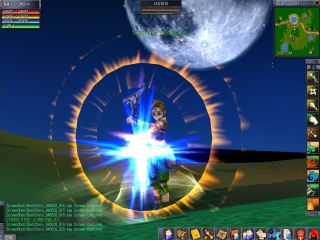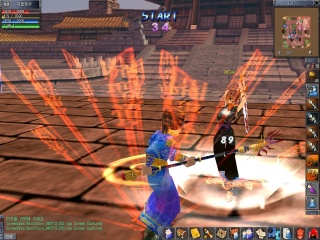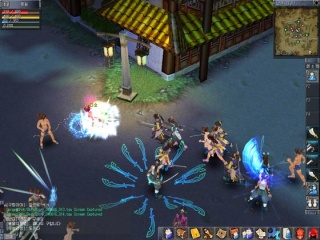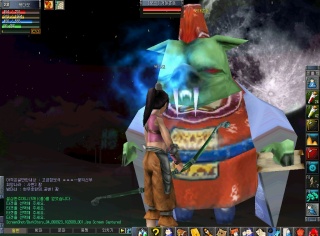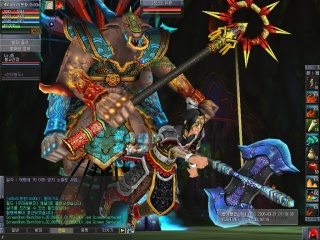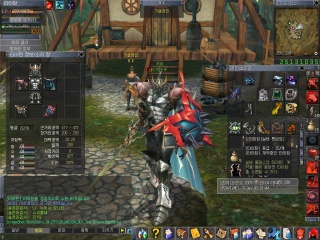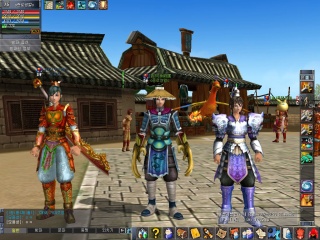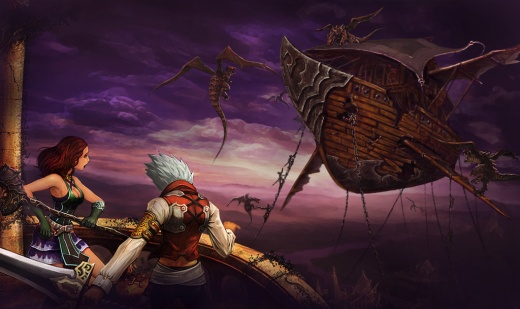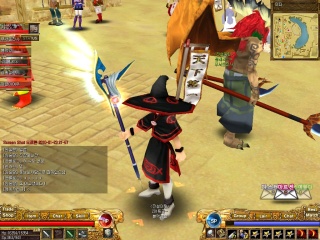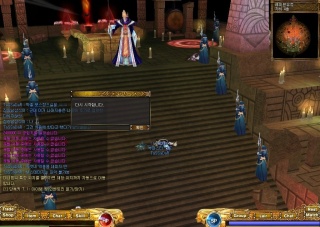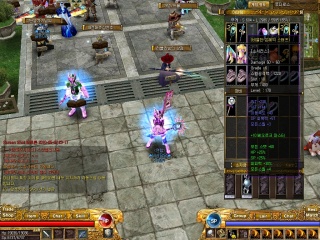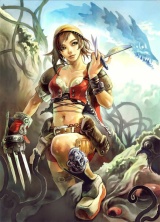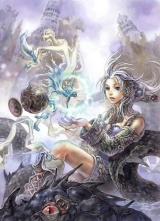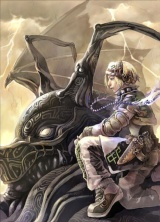A History of Korean Gaming
|
HiCom / eSofnet: |
|
|
하이콤 HiCom
|
Founded: |
December 8, 1988 |
|
Status: |
became eSofNet October 1999 |
|
Key People: |
韓泳祚 한영조 Han Youngjo: |
|
Website: |
www.gndhicom.com (offline) |
이소프넷 eSofnet
|
Founded: |
October 1999 |
|
Status: |
defunct (2004) |
|
Key People: |
Min Hongki: |
|
Website: |
www.esofnet.com (offline) |
Like many of the early game companies, HiCom started out as a distributor, and first became known as the official distributor of the Sega/Oacs Mark III and Samsung Gam*Boy consoles. Early in 1994, the company announced to shift its focus towards software development1. The distribution arm wasn't let dangling, though, and a few months later HiCom received funding by Samsung to build a chain of Samsung Plaza franchise stores and sell the larger company's consoles and ROM packs2.
In later years, HiCom was first and foremost a publisher, but they also entertained several in-house development teams over the years. They were one of the few developers to support the home consoles in the early nineties (they even became an official 3rd party developer to Sega of America in June 19963, but all their Mega Drive games were canceled), and later became famous for the popular action RPG series Corum.
In the aftermath of the IMF financial crisis HiCom had to file bancruptcy on June 30, 19984, but somehow managed to survive and reformed as HiCom Entertainment on August 1st the same year5. October 15, 1999, the company was taken over by its main investor Wise Naeil and renamed Wise HiCom6, before finally becoming eSofnet7 in December.
In May 2000 FEW, who had previously worked together with HiCom under the label Softop, joined the company wholesale. While eSofnet remained as an important publisher of retail software, in-house development was focused almost entirely on MMOs from then on. When eSofnet closed doors in 2004, none of their running online titles was discontinued, rather they were all picked up by different studios, which often consisted of former eSofnet staff.
Games
개구장이 까치 (Gaegujangi Kkachi) - Master System (August 21, 1993)
Cover
Licensed to the Lee Hyunse manhwa and animated series, Gaegujangi Kkachi is a stock "character" platformer. All it really shares with the cartoon are the main characters, and even they don't look quite the same.
The game resembles Alex Kidd in Miracle World quite a bit. Kkachi has to retrieve six keys from six stages that are selectable from the beginning. Enemies are either beaten by slapping them or by using limited special moves. There are random items (garlic, fruit, etc.) lieing or floating around throughout the levels that amount to money, which can be used in stores to buy items. With the pause button one accesses an inventory screen where said items and moves are used. After each (mostly uninspired) bossfight, Kkachi gets also a special weapon only usable against bosses. They were probably going for a Mega Man thing here, but the mechanic is broken and only the first weapon ever gained can be used, and even that only once throughout the entire game.
Every stage not only follows its own graphical theme, but also a distinctive design approach. In the high tech level one travels between individual screens through tubes, the tree is climbed vertically, and so on. A swimming stage and a shooter sequence on a vulture bring even more variety.
Gaegujangi Kkachi could be a very cool game if it weren't for the aggravating controls. Kkachi's inertia is worse than Super Mario's, few jumps come out like they're supposed to, and the short attack range causes the player to constantly run into enemies by accident.
푸쉬푸쉬 (Pushe Pushe) - Windows (September 1996)
A simplistic arcade style single-screen action game. The players mainly fight against one or more designated enemy rivals (those with the halo), the other enemies are mere obstacles. Whoever hits the opponent is "on fire" and can set flames to the floor, while the other party's fuse is burning up. Whoever's bomb explodes first loses the round.
Quick Info:
|
Developer: |
HiCom |
|
Publisher: |
HiCom |
|
Genre: |
Action: Single-Screen |
스틸헌트 (Still Hunt) - IBM PC (November 1996)
Possibly a transformed survivor of HiCom's otherwise fruitless Mega Drive phase, Still Hunt almost seems as if an ersatz for Gunstar Heroes, which was cancelled for a release in Korea because of censorship confusion. The design is breathing Treasure run 'n gun inspiration through and through. There's two playable characters (sadly no two player mode) with their individual extra weapons, half of which are lifted from Gunstar Heroes. Especially the flame thrower and the laser are very obvious, but some, like the napalm thrower, are completely new. In place of the innovative combining feature Treasure's masterpiece introcuded stands a simple experience-based upgrade system. Most of the time the two heroes will rely on their standard weapons, though, a shotgun and a machine gun.
One magazine "accidently" dubbed the game "Steel Hunt" in English letters, which is probably what the title was intended to mean, as most enemies are robots or cyborgs, and the overall visual design has a very mechanic look to it. The soundtrack could also have been as well in a Treasure game and sounds very Mega Drive-esque.
Still Hunt seems to have all the ingredients for a fun run 'n run, but it also has one big problem—level design. Most of the time, the task is just to run from left to right while mowing down a monotonous stream of enemies. The characters have dash attacks, the ability to hold onto ledges and even jetpacks, but all these are used only sporadically and often fail to enrichen the game in a meaningful way. Worst are the autoscrolling stages, some of which seem to go on forever. Only in the second half of the game there's some concept to the stages, but more often than not the AI can be cheated very easily, making even some bosses border on ridiculousness.
Still Hunt also has some of the most odd copy protections. It comes in form of a robot race, where the player has to bet on the winning robots to enter the game.
Arcade Games (1997)
Judging by a number of filings with the Game Rating Board, HiCom apparently produced a whole batch of arcade games in close succession in 1997, most of them simple puzzle or Bubble Bobble style action titles. Literally nothing is known about them beyond those filings, not even if they made it to the market at all.
코룸: 저주 받은 땅 (Corum: Jeoju Badeun Ttang) / Corum: Legend of Anpnentria - Windows (April 1997)
Cover
With Corum, HiCom's internal Saver Team created what would become Korea's third most successful RPG series after The War of Genesis and Astonishia Story. A fact not that easy to understand when having a try at the series' first entry, as it feels quite unpolished.
The story about a warrior that seeks revenge on the evil lord that has slaughtered his entire village is a beaten horse, but where the game falls flat the most is its action battle system. There's a severe lack of variety, as the hero only knows no offensive moves other than a standard combo and a dash attack. A block button is supposed to bring more depth to the fighting, but it puts the player in a worse situation more often than not, so a combination of evasion and button mashing is always more effective, the incredibly stupid AI takes care of the rest. Even the bosses seem ridiculously easy at first, that is until they switch into near-invincible mode, which requires hours of grinding to even be able to touch them at this state. There are also only three different weapon types, swords, halberds and (utterly useless) bows. Funny enough, there is a bar that recharges in between attacks and determines the strength of the next stroke, much like in Final Fantasy Adventure on the classic Game Boy.
The graphics are... weird. Everyone in their right mind should call them hideous, but at times they develope that certain plastic charme only East Asian renderings ever seem to achieve.
코룸 II (Corum II: Dark Lord) - Windows (January 1998)
A far superior sucessor that introduced many improvements, for example a battle system that actually made sense. On the other side stood incomprehensible changes, like the inability to run in towns and the restriction to saving points.
Corum II was brought to Germany by budget publisher Software2000, but was widely dismissed by reviewers as a mediocre and misplaced console style RPG.
코룸 III: 혼돈의 마법 주마리온 (Corum III: Hondon-ui Mabeop Jumarion) / コルム大陸英雄記 ~混沌の魔法·ジュマリオン~ (Corum Tairiku Eiyuu Ki: Konton no Mahou Jumarion) / Corum III: Chaotic Magic - Windows, BeOS (February 1999)
The final part of the trilogy makes the other two almost look like beta versions in comparison. To begin wi, the story appears much less stereotypical than before. Three mythical sages seek to bring balance to the world by unleashing the power of an ancient magical artefact, the Jumarion. As they can't seize it themselves, they seek out the help of a mortal mage, who longed for the artifact all his life, and leaves a less than thrustworthy impression. Of all this the young knight Kaien knows nothing when he embarks on his pilgrimage. Rather he has to deal with a bunch of supersticious villainers and an alledgedly cursed little girl with a really strange personality...
For the first time the prerendered graphics are rather good-looking, though they still appear sterile. The combat system has also been improved greatly and now stands nothing short of the greatest of beat 'em up-esque ARPGs like Terranigma or Story of Thor. Magic has never been a strength of the Corum series. Now some of the spells actually come in form of special moves that have to be executed during combos, making their usage much more natural.
During the course of the game, Kaien gathers a party of three characters overall. Rather than fighting at the same time at his side, they're available to the player to switch in between them during the game. It goes without saying that each of them comes with their individual strengths and weaknesses.
Unusual for action RPGs, Corum III comes with a network version. The three playable characters would have suited well for cooperative play, but instead the game offers several arena modes, as well as a dungeon rush. It is a nice extra, but amounts to little more than a gimmick in the end.
The music is by far the best in the series as well. The game was originally released on three CDs, whith the last one entirely dedicated to the CD-audio sountrack. Did the first two games suffer from a rather small selection of songs available, Corum III got the right tune for every mood.
Altogether, Corum III may be the best single player action RPG ever developed in Korea, and it was a loss for Germany that this was passed for a localization in favor of its still rather unpolished predecessor. This time Japan got more lucky, as Bothtec provided a translated version over there. The most funny and at the same time most sad thing is, Corum III actually made it to the US, yet hardly anyone ever got to play it there as the localization was handled by Gobe Software, then publisher of BeOS. Thus the game was only available for that not exactly widespread operating system.
코룸 외전: 이계의 강립자들 (Corum Oejeon: Igye-ui Gangnipja-deul) / Corum Side Story / Corum Another Story - Windows (December 1999)
The "Side Story" in the title already implies that this isn't an ordinary entry in the series, but the extend to which it did away with everything the popular series was known for came as quite a shock for its fans. In place of the standard medieval fantasy world now stood a semi-science fiction / cyberpunk setting a la Final Fantasy 7. But not only did the scenario have nothing to do with the former games, the genre was also dropped in favor of a turn-based SRPG, to try and mimick the success of Softmax' The War of Genesis series, which HiCom was also publishing at the time8.
Artwork
드래곤라자 (Dragon Raja) - Windows (April 14, 2000[open beta]; June 16, 2000)
Based on a famous web novel by Lee Youngdo, this was the game HiCom and FEW had been working on under the Softop label. After eSofnet closed up shop, Dragon Raja was adopted by Barunson Interactive and is still played today.
Wallpaper
N-Age (엔에이지) - Windows (February 24, 2001 [open beta]; October 1, 2002)
Artwork
N-Age is not quite the typical fantasy MMORPG. Leather jackets, gang fights and motorcycle races are the staples of this modern day setting. Cedar Online continued the service until April 2010. Ever since there have been constant rumors of a reopening, but nothing has come forth so far9.
Artwork
墨香 (묵향, Mukhyang) / Dark Story Online / Titan Online (타이탄온라인) / 무협대전쟁 (Muhyeop Daejeon Jaeng) - Windows (June 2003 [open beta]; November 16, 2007)
Dark Story Artwork
The team responsible for this Wuxia RPG continued their duty at Eyasoft after the end of eSofnet. In 2007 it was renamed Titan Online, but the game remained essentially the same. In 2011 however, Eyasoft shut off the domestic service of all their current games, including Titan Online on June 1, 201110 while continuing international service, a move which earned Eyasoft the wrath of many gamers due to overcomplicated refund procedures11.
코룸온라인 (Corum Online) - Windows (October 1, 2003 [open beta]; August 2004)
Artwork
The continuation of the Corum series went over to NetTimeSoft. After the company's web presence disappeared sometime in 2010, the game itself was also discontinued on June 13, 2011, only two weeks after Dark Story Online, leaving Dragon Raja as the last remaining legacy of eSofnet.
Unreleased Titles:
파워볼 AD2001 (Power Ball AD2001) (1994-1995)
If (이프) (1995-1996)
Crash Dive (1997-1998)
Corum 4 (1999)
Ys Online (2004)
References
1. ET News 3/29/1994
2. ET News 9/28/1994
3. E-Sofnet Company History August 2002
4. Amuseworld 7/1998, page 86
5. PC Champ 10/1998, page 148
6. PC Power Zine 12/1999, page 184
7. Esofnet Company History
8. Interview with Jason Park
9. http://ruliweb.daum.net/ruliboard/read.htm?table=game_online&num=32704
10. http://www.gameshot.net/common/con_view.php?code=GA4d6da97523d1e
11. http://media.daum.net/cplist/view.html?cateid=100000&cpid=85&newsid=20110303184328570&p=gamedonga
|
HiCom / eSofnet: |
|
|


